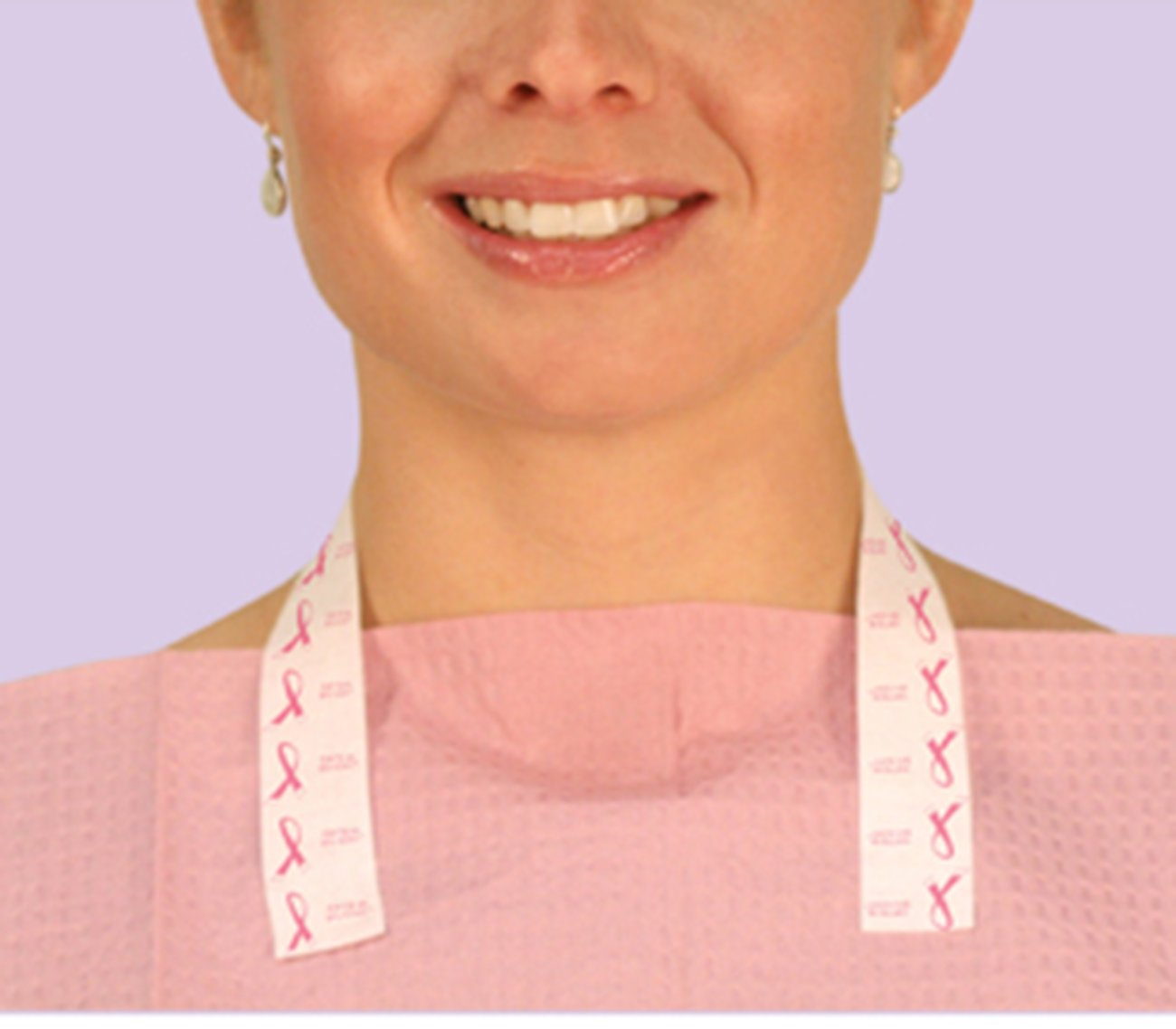Researchers at Tufts University School of Dental Medicine recently have published a study that found 20 to 30% of dental bib clips still harbor bacterial contaminants even after proper disinfection procedures are followed. Rubber-faced metal bib clips were found to to be the clips that retain more bacteria than bib clips which are made only of metal. The study also found that before disinfection, bib clips that are used during orthodontic procedures had 3x the bacterial contaminants than of those used during endodontic procedure, which suggests the amount of bacteria on the clip can be noticeably affected by the dental procedure in which it's used.
The study is believed to the first peer-reviewed study to be published on bib clip contamination. Four other research reports have found bacterial contamination on dental bib holders, including research conducted by U.S. infection control specialist Dr. John Molinari, the University of North Carolina at Chapel Hill’s School of Dentistry Oral Microbiology lab and the University of Witten/Herdecke in Germany.
“Our study included statistical analysis and, to the best of our knowledge, is the most comprehensive study to date analyzing the bacterial load on dental bib clips before and after disinfection in two specialized clinics. The study found that disinfecting reduced bacterial contamination by 92% but some bacteria remained on several bib clips even after disinfection. Further research is underway to identify the bacterial species in samples from both pre- and post-disinfected bib clips to determine whether or not they retain disease-causing bacteria and if they pose contamination risks,” said Addy Alt-Holland, M.Sc., Ph.D., Assistant Professor at Tufts University School of Dental Medicine and the lead researcher on the study.
The study analyzed bacterial loads on bib clips from a total of 80 dental bib holders – 40 collected from Tufts University School of Dental Medicine’s endodontics clinic and another 40 collected from the School’s orthodontics clinic. From each chain, both clips that hold the dental bib were sampled before and after practitioners disinfected the bib holder following the school’s disinfection protocol, which requires the holder to be wiped down with an EPA-approved disinfectant wipe, according to the manufacturer’s instruction. Disinfection was found to reduce bacteria on the bib clips, but did not completely eliminate it, leaving 20 to 30% of the bib clips contaminated with bacteria.
- 30% of the metal bib clips collected from the endodontics clinic and 25% of those collected from the orthodontics clinic were still contaminated with bacteria after disinfection.
- 25% of the rubber-faced metal bib clips collected from the endodontics clinic and 20% of those collected from the orthodontics clinic were still contaminated with bacteria after disinfection.
“The findings of the study translate into private practice. In a busy practice, you are doing a lot of different procedures and bringing patients in and out quickly. It is time-consuming to properly clean bib clips by autoclave, and spray is not an effective way to disinfect bib clips. If you are using bib holders, make sure the chains and clips are being disinfected after every patient, or consider moving to using disposable bib holders,” said Gerard Kugel, D.M.D, M.S., Ph.D., Professor at Tufts University School of Dental Medicine and senior author on the paper. Dr. Kugel is also Associate Dean for Research at Tufts.
Nature of Dental Treatment and Style of Bib Clips Impacts Level of Bacteria on Bib Clips
When the bib clips were sampled before disinfection, the study found a significant difference in the presence of bacteria on the clips depending on which clinics the clips were sampled from and the style of the bib clip. Before disinfection, metal and rubber-faced metal bib clips collected from the orthodontics clinic had 149% to 205% more bacteria, respectively, than clips collected from the endodontics clinic. The authors speculate that the use of rubber dams during endodontic treatment may limit the contamination of bib clips while orthodontic treatment may result in higher bacterial presence on clips since it involves entering and re-entering the mouth multiple times which could lead to more bacterial contamination from the practitioner’s gloves; or adolescent and teenage patients, common to orthodontics, may be more prone to touch and handle the bib clip during treatment. After disinfection, the bacterial counts on clips from both clinics were similarly reduced.
Before disinfection, rubber-faced metal bib clips were found to have more than double the number of bacteria on average than metal clips had. “The surface of rubber and metal is different in composition and may explain the difference in bacterial loads on them,” says Dr. Alt-Holland. Rubber-faced metal bib clips collected from the endodontics clinic had 119% higher bacterial count than metal bib clips and 167% higher bacterial count on those from the orthodontics clinic before disinfection. After disinfection, the bacterial counts on both styles of clips were found to be similar.
Continuation Study Underway to Identify Bacteria Strains
A continuation study is already underway by researchers at Tufts University School of Dental Medicine and the Forsyth Institute to identify the type of bacteria present on dental bib clips before and after disinfection to help determine if there are cross-contamination risks to patients.
Visit www.duxdental.com/bibclipstudy to download a full transcript of the research paper “Do Bib Clips Pose a Cross-Contamination Risk at the Dental Clinic?”.

